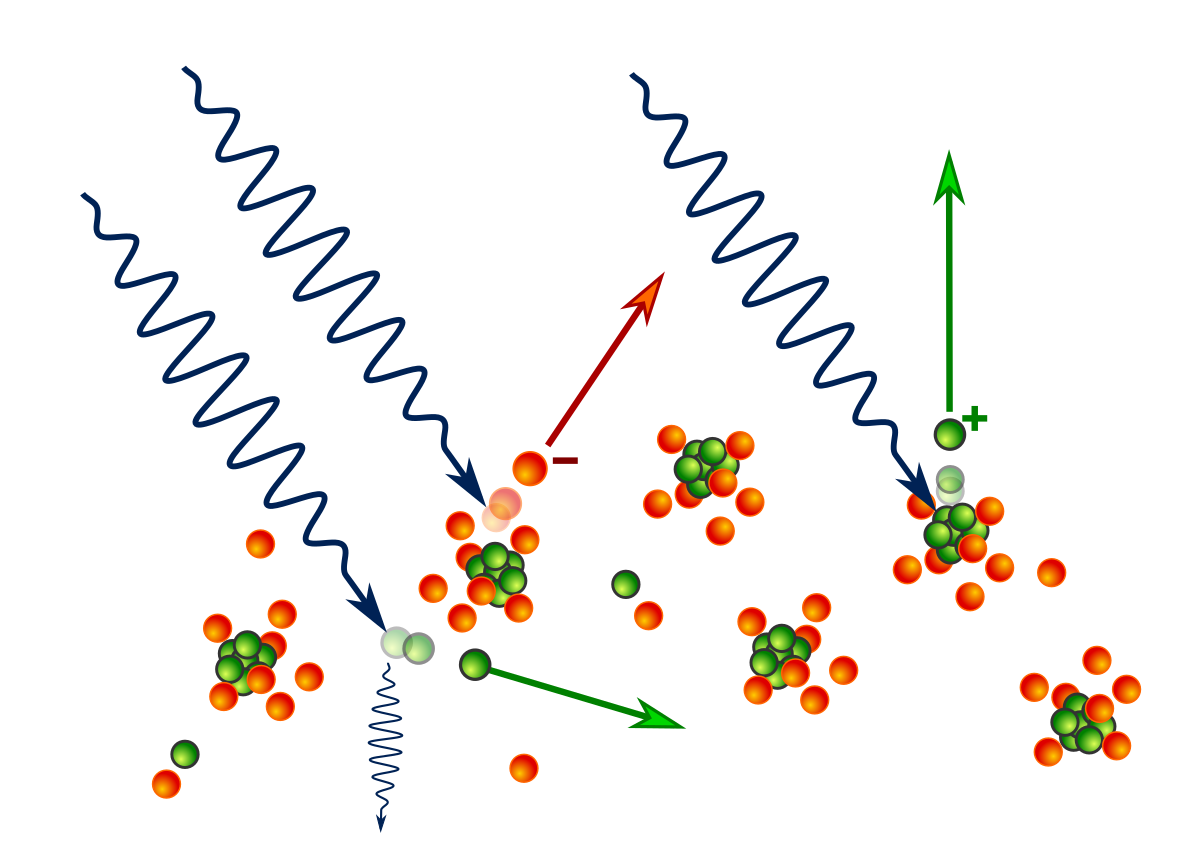
Compton scattering is a fascinating phenomenon in the field of physics that has astounded scientists for decades. Named after Arthur H. Compton, the American physicist who first described it in the 1920s, Compton scattering refers to the interaction between photons and charged particles, typically electrons. It involves the scattering of high-energy X-rays or gamma rays by free electrons, resulting in a change in their wavelength and direction.
This unique scattering process has been extensively studied and has provided valuable insights into the nature of electromagnetic radiation and the behavior of particles at the atomic and subatomic levels. In this article, we will delve into the world of Compton scattering and explore eight astounding facts that highlight its significance in the realm of physics.
Key Takeaways:
- Compton scattering is like a cosmic game of energy transfer between photons and electrons, helping scientists understand celestial objects and confirming the rules of quantum physics.
- Compton scattering is not just a physics concept, it’s also the secret behind medical imaging and the reason why celestial objects appear to shift colors in the night sky.
Compton Scattering Explained
Compton scattering refers to the phenomenon where a photon, typically X-ray or gamma-ray, interacts with an electron and transfers a portion of its energy to the electron. This process was first described by Arthur H. Compton in 1923 and has since become a fundamental concept in quantum mechanics.
Role of Compton Scattering in Astrophysics
Compton scattering plays a crucial role in the field of astrophysics. By studying the scattering of X-rays and gamma-rays from celestial objects, scientists can gain valuable insights into the composition and behavior of these objects. This technique has been instrumental in deepening our understanding of pulsars, black holes, and other cosmic phenomena.
Compton Scattering and Medical Imaging
The principles of Compton scattering are also applied in medical imaging techniques such as computed tomography (CT) scans. By measuring the scattering of X-rays within the body, CT scans can produce detailed cross-sectional images that aid in the diagnosis and treatment of various medical conditions.
Compton Scattering and Particle Physics
Compton scattering is extensively used in particle physics experiments to study the properties of subatomic particles. By colliding high-energy photons with electrons or positrons, scientists can investigate the structure and behavior of the fundamental building blocks of matter.
Energy-Dependent Scattering Angle
One of the remarkable features of Compton scattering is that the scattering angle of the photon is dependent on its energy. Higher-energy photons are more likely to experience larger scattering angles, providing valuable information about the energy levels involved in the scattering process.
Blue Shift and Red Shift
Compton scattering is responsible for phenomena such as the blue shift and red shift. When a photon scatters off an electron, the wavelength of the scattered photon can change. This effect is used to explain the observed shifts in the spectral lines of celestial objects, providing insights into their motion relative to Earth.
Quantum Mechanical Description
Compton scattering is a perfect example of a quantum mechanical phenomenon. The interaction between the photon and electron can only be accurately described using the fundamental principles of quantum physics, highlighting the importance of quantum mechanics in explaining the behavior of particles at the atomic and subatomic level.
Contribution to the Confirmation of Quantum Electrodynamics
Compton scattering played a significant role in confirming the predictions of quantum electrodynamics (QED), a fundamental theory describing the interaction between charged particles and electromagnetic fields. The experimental verification of the energy transfer and scattering angles in Compton scattering provided crucial support for the validity of QED.
Conclusion
Compton scattering is a fascinating phenomenon in physics that has greatly contributed to our understanding of the interaction between light and matter. From the discovery of the Compton wavelength to its applications in various fields, it continues to be an area of ongoing research. The eight astounding facts about Compton scattering discussed in this article highlight the significance and impact of this phenomenon. Whether it’s the explanation behind the blue color of the sky or the imaging technique used in medical diagnostics, Compton scattering offers valuable insights into the behavior of photons and electrons. As we delve deeper into the mysteries of the universe, Compton scattering will undoubtedly remain a crucial element in unraveling the secrets of the microscopic world.
FAQs
Q: What is Compton scattering?
A: Compton scattering is the phenomenon where a photon interacts with an electron, leading to a change in its wavelength and direction due to the transfer of momentum.
Q: Why is Compton scattering important?
A: Compton scattering helps us understand the dual nature of light as both a particle and a wave, and provides valuable insights into the interaction between photons and electrons.
Q: Who discovered Compton scattering?
A: Compton scattering was discovered by American physicist Arthur H. Compton in 1923, for which he received the Nobel Prize in Physics in 1927.
Q: What is the Compton wavelength?
A: The Compton wavelength is a fundamental constant in quantum mechanics that represents the size of a particle. It is inversely proportional to its mass.
Q: What are the applications of Compton scattering?
A: Compton scattering has applications in various fields, including medical imaging, materials science, nuclear physics, and astrophysics.
Q: How does Compton scattering contribute to medical imaging?
A: Compton scattering is utilized in X-ray imaging techniques such as computed tomography (CT) scans to obtain detailed information about the internal structures of the human body.
Q: Can Compton scattering only occur with X-rays?
A: No, Compton scattering can occur with any type of electromagnetic radiation, including X-rays, gamma rays, and even high-energy photons from cosmic rays.
Q: Is Compton scattering a reversible process?
A: Yes, Compton scattering is a reversible process, meaning that the scattered photon can undergo further scattering events and eventually regain its initial energy and direction.
Compton scattering's fascinating insights into light's dual nature barely scratch the surface of physics' mind-bending phenomena. Dive deeper into <quantum mechanics' otherworldly realm>, where particles behave in ways that defy classical intuition. Explore <particle physics' subatomic zoo>, filled with exotic species like quarks, leptons, and bosons. Embark on a journey through <physics' awe-inspiring landscape>, from the tiniest building blocks of matter to the vast expanse of the cosmos, and prepare to have your perception of reality forever altered.
Was this page helpful?
Our commitment to delivering trustworthy and engaging content is at the heart of what we do. Each fact on our site is contributed by real users like you, bringing a wealth of diverse insights and information. To ensure the highest standards of accuracy and reliability, our dedicated editors meticulously review each submission. This process guarantees that the facts we share are not only fascinating but also credible. Trust in our commitment to quality and authenticity as you explore and learn with us.


